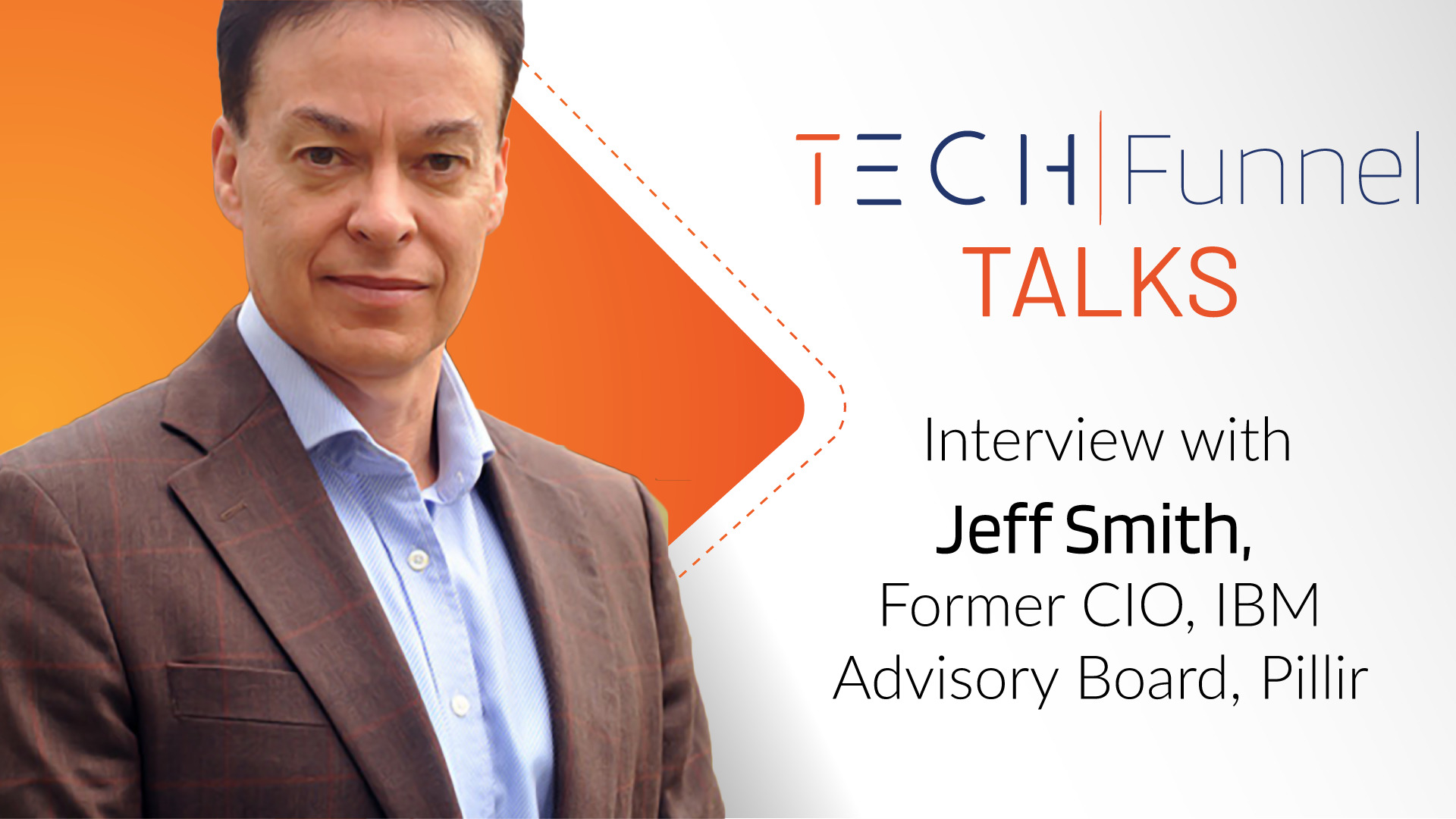Jeff Smith is the former Chief Information Officer at IBM, advisors to companies like Box and Zoom, and the COO of World Fuel Services. Smith has considerable first-hand experience addressing digital transformation in both enterprise and industrial settings, including his C-level position in the oil and gas industry, providing a perspective on the challenges inherent in many large, asset-heavy industrial companies.
He has served as CIO of IBM and in an Advisory capacity at Zoom and Box, making him privy to some of the most innovative IT and collaboration initiatives in the business world. He brings with him a passion for maintaining an agile, effective company culture focused on shared goals. Learn more about Pillir. Connect with Jeff here.
In this conversation, Jeff Smith shares his insights on leading companies into large-scale cloud adoption, how technical debt affects IT departments, and his role on the advisory board of Pillir.
- TechFunnel: Can you talk about the role digital transformation is playing in organizations?
Jeff Smith: Digital transformation is becoming a cornerstone of most companies’ strategies. Ultimately, enterprises need to increase customer value propositions by finding ways to digitally incorporate data, a process that data with minimal friction, and improve the customer experience. That requires the migration of business processes to more modernized, cloud-based processes.
- TF: What are the critical parts of digital transformation that organizations often miss?
JS: Companies, and specifically enterprises, frequently miss that digital transformation is more than customer-facing portals, websites, etc. It’s creating simpler, automated processes, utilizing APIs to connect to other services.
The biggest missing piece is having the leadership and talent strategy required to execute on these digital ambitions. Another thing that’s often missing is companies’ recognition that this transformation can’t take years. Speed is the new currency.
- TF: What has been your experience in leading large-scale cloud adoption and updating cloud-based infrastructure?
JS: Migrating to the cloud has a multitude of benefits that people tend to undervalue at first. In my own experience, I put an aggressive cloud migration into action to move all applications and infrastructure (including networks and telephones) to the cloud in two years. We have since closed 20 of 22 physical data centers.
This provides an environment where the design, development, and deployment of new cloud-native business applications can take place in a fraction of the time, as well as providing benefits like better performance, resilience, and security for both legacy and new applications. Overall, this migration to the cloud creates agility and adaptability that many companies don’t have, allowing them to compete with fewer disruptions.
- TF: Tell us about your role in Pillir and what makes it stand out from competitors?
JS: Pillir has tackled a very complex problem and created a platform that makes it much easier to modernize legacy applications and move to the cloud in a greatly reduced timeframe. The ability to translate a large share of legacy code to a low-code cloud environment, combined with the inclusion of ready-made integrations into SAP, means that teams can come up-to-speed and rapidly migrate custom SAP code into modern cloud services.
- TF: What is “technical debt” and how does it affect IT departments’ ability to move to cloud-based environments?
JS: Technical debt refers to older, legacy code that generally requires a rewrite to modernize. This calls for older programming skills—resources that are now hard to find and take too much time and money to effectively implement. Pillir’s platform is great for developers, especially in SAP environments.
It lowers the risk and time of deployment because it includes prebuilt integrations into SAP. Technical debt, or the existence of older, legacy solutions, is also generally tightly coupled with other application services, which means IT teams have to upgrade a lot at the same time. This makes modernization much more difficult. Pillir allows companies to decouple these services so they can modernize smaller pieces at a time, lowering risk, cost, and time-to-deploy.
- TF: How does EdgeReady Cloud help to automatically modernize legacy applications?
JS: The main benefit of a low-code rapid application development platform, and particularly Pillir’s EdgeReady Cloud, is not having to start the modernization effort from scratch. Pillir allows code conversion to a cloud-native environment where development teams only have to code the net difference.
- TF: Any final thoughts for IT leaders to consider when it comes to cloud adoption and ERP readiness?
JS: Make the move to the cloud. Companies will build skills and deliver greater business value more quickly. Pillir can become the strategic platform to accelerate the transition, alleviate cost and risk, and build modern skills for their IT teams.







